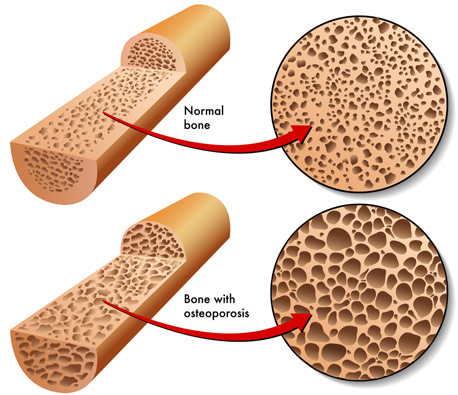Broken Wrists and Stronger Bones
Julia Cruz Beth Israel Deaconess Medical Center Correspondent
MARCH 01, 2011
Better Screening and Treatment Can Lead to Improved Bone Strength
Margaret Ulmer relies on her hands for work. So the 59-year old concert
pianist and Director of the New England Conservatory's summer program was
immediately concerned when she tripped last July and used her hands to
break her fall.
"I knew right away," says Ulmer. "I looked at my wrist and said, 'It's
broken.'"
Margaret's diagnosis was correct, and not uncommon. Between 150,000 and
200,000 people suffer a wrist fracture every year in the United States.
Their injuries are providing Beth Israel Deaconess Medical Center
Orthopedic Surgeon Dr. Tamara Rozental
with a unique opportunity to study screening and treatment for what some
experts consider a major threat to public health in this country,
osteoporosis.
Osteoporosis is a disease characterized by the loss of bone mass and bone
tissue. It can lead to increased risk of fractures - especially to the
wrist, spine and hip. According to the
National Osteoporosis Foundation, an estimated 10 million Americans already have osteoporosis and nearly 34
million more are at risk for developing it. Women over age 50 are at the
greatest risk, with a 40% chance of bone fracture related to osteoporosis.

According to Dr. Rozental, wrist fractures are an independent predictor of
a second fracture, meaning if you break your wrist, your chances of
breaking another bone in the future increase substantially.
"Wrist fractures tend to present as the first fragility fracture in
patients," says Dr. Rozental, "so they give us an opportunity to screen for
abnormalities in bone density."
When Dr. Rozental's team reviewed screening rates for osteoporosis, they
found only about 3 percent of women over 50 who had broken a wrist were
given a bone density test by their physician, a rate Dr. Rozental calls
abysmal.
In hopes of improving that rate, Dr. Rozental focused the second part of
her study on communications between orthopedic surgeons and primary care
physicians (PCPs). The study followed 290 patients with wrist fractures. In
half of the cases, BIDMC surgeons ordered a bone density test for the
patient and communicated the results to the patient's primary care
physician. For other half, surgeons only sent the primary care physician a
letter with information about bone density screening and left the decision
to the PCP.
Ordering the bone density test resulted in 93% of patients being screened,
100% discussing treatment with their PCP, and 86% of patients actually
being treated for osteoporosis, a major improvement.
"This has basically changed our practice in this office," says Dr.
Rozental. "We try to order a bone density test for patients who haven't had
one for two years."
Margaret Ulmer's bone density test discovered she had osteopenia, an early
sign of osteoporosis. The diagnosis was not a surprise for Margaret, whose
mother suffers from severe osteoporosis. Her primary care physician is
monitoring Ulmer's
diet and calcium intake
, and now that her broken wrist has healed, Margaret plans to increase her
exercise regimen, a proven way to improve bone strength.
"I think I need to keep telling myself that taking some calcium pills and a
bone density test is not enough," adds Ulmer.
And 9 months after her fall, Margaret Ulmer is back to playing the piano,
performing back-to-back concerts at the conservatory this week with
virtually no wrist pain.
"It felt fine," says Ulmer, "Two hours of playing with an intermission.
It's nice to be back."
Find out if you are getting enough calcium and Vitamin D »
Related Links
- Senior Health - Gerontology
- Sports Medicine & Shoulder Surgery
- Importance of Calcium and Vitamin D
- Living a Long, Healthy Life

